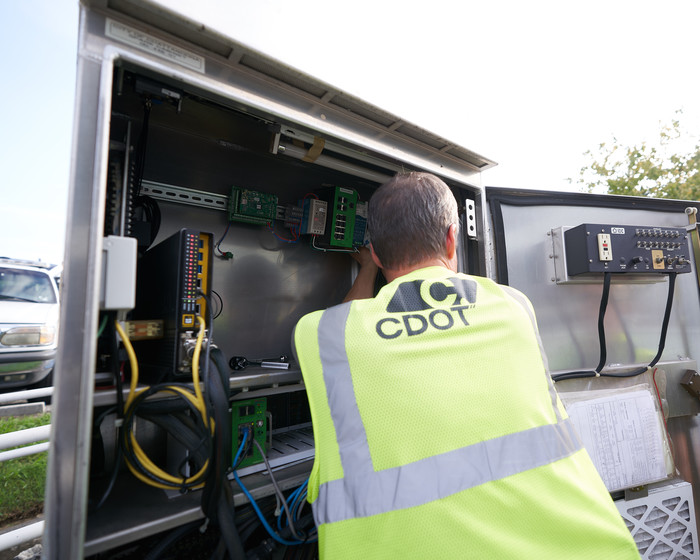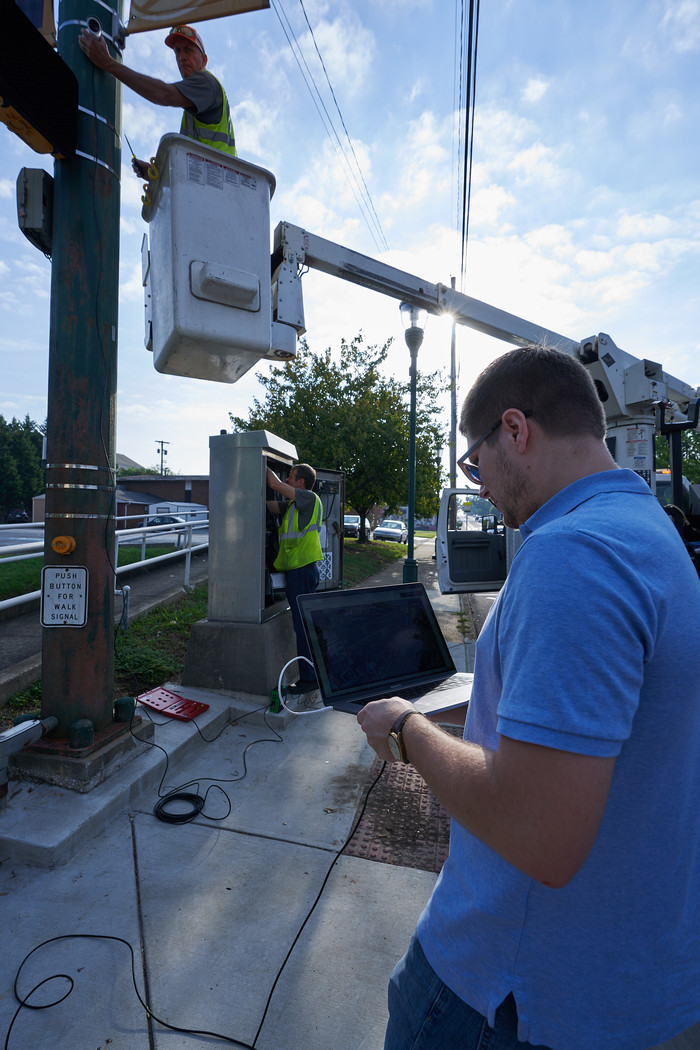CDOT & CUIP technicians calibrating some of the sensors deployed. Photography by Andrew Rodgers/CUIP.
“We’re thinking about how we can help first responders know the best route to and from hospitals, or the best route for firefighters to take from fire stations to locations where they need to go — utilizing real-time information, routing for incidents that may have happened on roadways or closures,” he says.
Pole-mounted sensors are also helping CUIP test air quality throughout the day and during different seasons. Researchers hope to better understand how air quality may correlate with traffic, temperature and humidity, which could lead to changes that would improve public health, according to Sartipi.
“We measure different particulate matter,” she says. “There are a lot of hypothetical research questions to answer — such as, if you were thinking of going running and have asthma, this is probably a day it’s going to be healthier to be inactive.”
MORE FROM STATETECH: What are the best practices for smart city success?
Connectivity Enhances Customer Information Distribution and Service
In addition to the technologies CUIP is using in its research, Chattanooga has incorporated other smart tech capabilities in recent years.
EPB became the first U.S. utility to offer 1-gigabit internet speed service to its entire community in 2010 — rolling it out first to the most socioeconomically challenged neighborhoods to help bridge the digital divide, according to Vice President of Marketing J. Ed. Marston.
“We know that internet is an economic development tool, improves people’s quality of life and improves learning access and opportunities,” Marston says. “Before, some businesses or select neighborhoods might have been able to get fiber service; this made it accessible to every home and business — because it’s very important it be a community asset that’s useful to everybody, not a rarified service.”
Approximately 1,200 smart switches layered on top of the city’s fiber-optic network have allowed EPB to create an automated local electricity distribution system that alerts the provider when a tree falls on a power line, causing an outage. The system can potentially automatically switch that area to a new distribution source.
Customers can also view real-time personal energy use data through smart meters that conduct readings every 15 minutes. If a home with a heat pump begins using an abnormally large amount of electricity, the atypical consumption is identified by the same open source code algorithm Twitter uses to detect an increase in feed activity, Marston says — which EPB applies to electrical data such as voltage and frequency — and the company is alerted through automated reporting.
“When heat pumps are not operating properly, they will go to auxiliary power, using a lot more energy than they typically would and doing a poorer job of maintaining climate control,” Marston says. “In the past, customers might only discover that from a very high bill. Now we’re able to proactively contact them and let them know they need to have their system checked.”
While EPB is city-owned, Chattanooga’s work with external organizations like CUIP isn’t necessarily an unusual move in today’s smart technology landscape.
A number of cities are, in fact, partnering with universities, private enterprises and other organizations to test and adopt smart technology, according to Neil Kleiman, research director for the Mayors Leadership Institute on Smart Cities and a professor at New York University’s Robert F. Wagner Graduate School of Public Service.
Small to midsized municipalities, in particular, may benefit from such relationships. They might not have the same array of companies looking to experiment in the space as large cities, or as many consulting firms offering to help them strategize. However, with fewer factions involved, smaller cities may find that introducing smart technology can be a fairly collaborative and straightforward process, Kleiman says.
“A lot of times, it’s much easier to implement,” he says. “Communication and strategy are so much easier to do in smaller places. You know each other and can get on the same page.”













